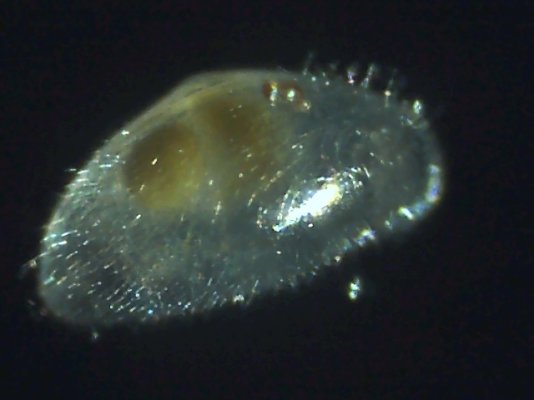Noticed these guys in my sand bed and they are new. They caught my eye as rather large copepods or maybe rather small amphipods. They are benthic as far as I've seen, and motile, crawling on and in the sand. They were concentrated around a snail that I think is in the process of dying. Sucked a few up and put under the microscope expecting some little thing with a face, eyes and many legs and saw nothing of the sort. Looks like a clam with hair all over it. Perhaps it just moves with all those hairs? Not a problem or a pest, I'm just curious what has made itself a home in my tank.















